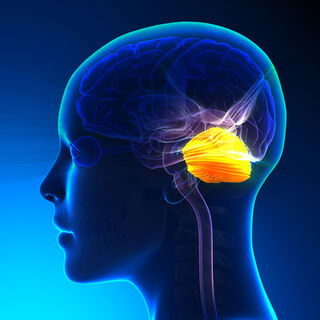Fear
The Neuroscience of Fear-Induced “Freeze” Responses
Freezing behaviors are coordinated by the brain’s cerebellum.
Posted March 16, 2022 Reviewed by Abigail Fagan
Key points
- A well-functioning cerebellum coordinates fluid movements and calibrates freeze responses as part of the brain's survival network.
- If freezing in place is a good survival strategy, the cerebellum automatically initiates a quick, momentary freeze response.
- If the cerebellum dysfunctions in fearful situations, freeze responses last too long and cause immobility akin to crippling anxiety.

Neuroscientists at the University of Bristol have unearthed fear mechanisms rooted in the cerebellum that could lead to new anti-anxiety medications and treatments for post-traumatic stress disorder (PTSD). These findings (Paci et al., 2022) were published on March 15 in the peer-reviewed journal eLife.
"These findings show that the cerebellum is a part of the brain's survival network which regulates fear-memory processes," the authors write. "[This study] raises the possibility that disruption of the cerebellum might underlie anxiety and other fear-related disorders, thereby providing a new target for future therapies."
In animal experiments using fear-conditioned rats, the researchers found that the cerebellum modulates how another brain area called the periaqueductal gray (PAG) triggers automatic defensive behaviors such as freezing in place during times of perceived danger.
This research advances our understanding of how survival networks rooted in subcortical brain areas cause the body to automatically freeze in response to fear. When the cerebellum is functioning well, a momentary freeze response promotes survival. However, when the researchers disrupted cerebellar functions, the animals used in this study were paralyzed by fear.
What Does the Cerebellum Do?
The cerebellum coordinates fluid motor movements in sports and daily life. It also coordinates our thoughts, much like it coordinates our movements. (See, "The Neuroscience of Superfluid Thinking.")
As part of a survival network, the cerebellum facilitates gracefully taking flight, fighting it out with well-coordinated muscle movements, or freezing in place for just long enough to plot your next move.

For their recent study, the Bristol researchers encoded a fear memory by pairing a mild electric foot shock with an audible tone.
Once their lab rats were conditioned to fear the auditory tone by itself, they implanted electrodes to monitor neuronal activity within the PAG. When the rats heard the fear-conditioned tone, it triggered a momentary freeze response, and specific neurons in the PAG simultaneously "lit up."
As Part of a Survival Network, the Cerebellum and PAG Coordinate Perfectly-Timed "Freeze" Responses
Notably, when a rat's cerebellum was functioning properly, the freeze response was brief and didn't stop an animal in its tracks for too long.
However, when the researchers blocked the cerebellum's ability to communicate with the PAG, freeze responses went into overdrive and became exaggerated. Instead of freezing momentarily, hearing the fear-conditioned tone immobilized the animals for an extended period of time.
These findings suggest that the cerebellum plays a crucial role in coordinating perfectly-timed behavioral responses to threatening stimuli. But cerebellar dysfunctions wreak havoc on perfectly-timed freeze responses. Without a well-functioning cerebellum, the freeze response lasts too long.
The latest (2022) cerebellar research sheds light on why crippling anxiety is so immobilizing and may provide a new target for anxiolytic medications. "Until now, little was understood about how the cerebellum modulates neuronal activity in other brain regions, especially those related to fear and anxiety," the study's lead authors said in a news release.
"Importantly, our results show that the cerebellum is part of the brain's survival network that regulates fear memory processes at multiple timescales and in multiple ways; raising the possibility that dysfunctional interactions in the brain's cerebellar-survival network may underlie fear-related disorders and comorbidities," they conclude.
References
Elena Paci, Charlotte Lawrenson, Jasmine Pickford, Robert A.R. Drake, Bridget M. Lumb, Richard Apps. "Cerebellar Modulation of Memory Encoding in the Periaqueductal Grey and Fear Behaviour." eLife (First published: March 15, 2022) DOI: 10.7554/eLife.76278


